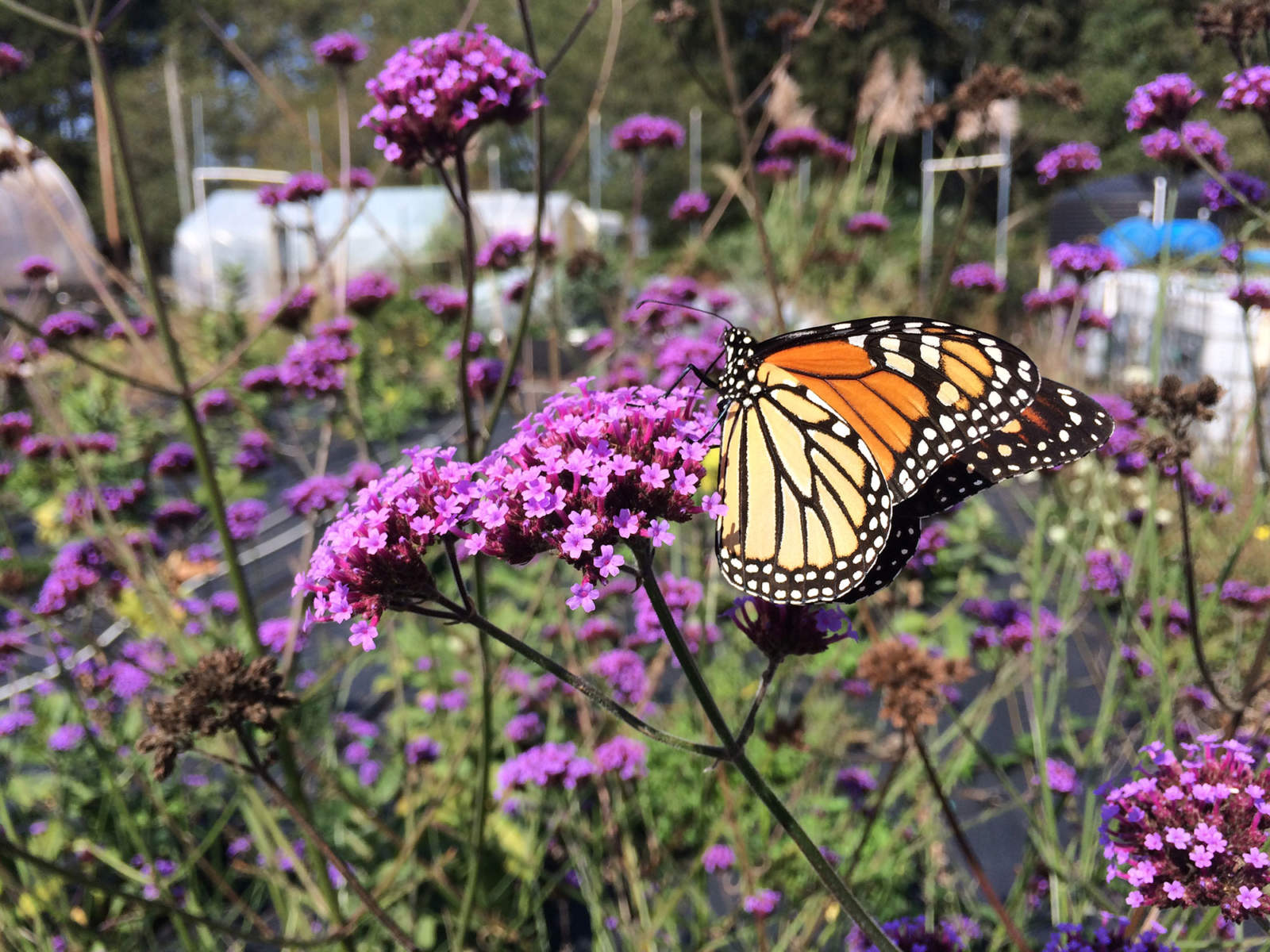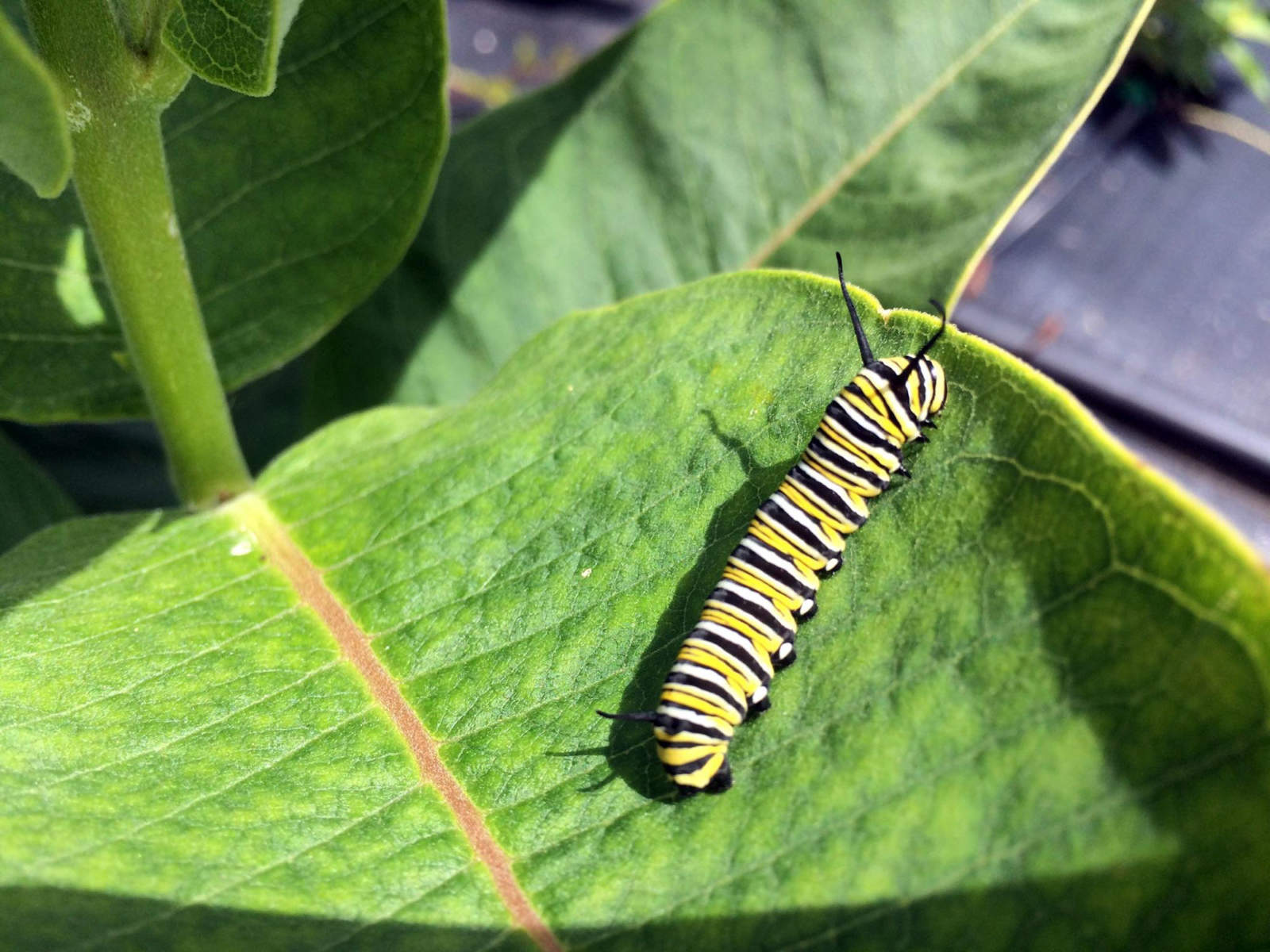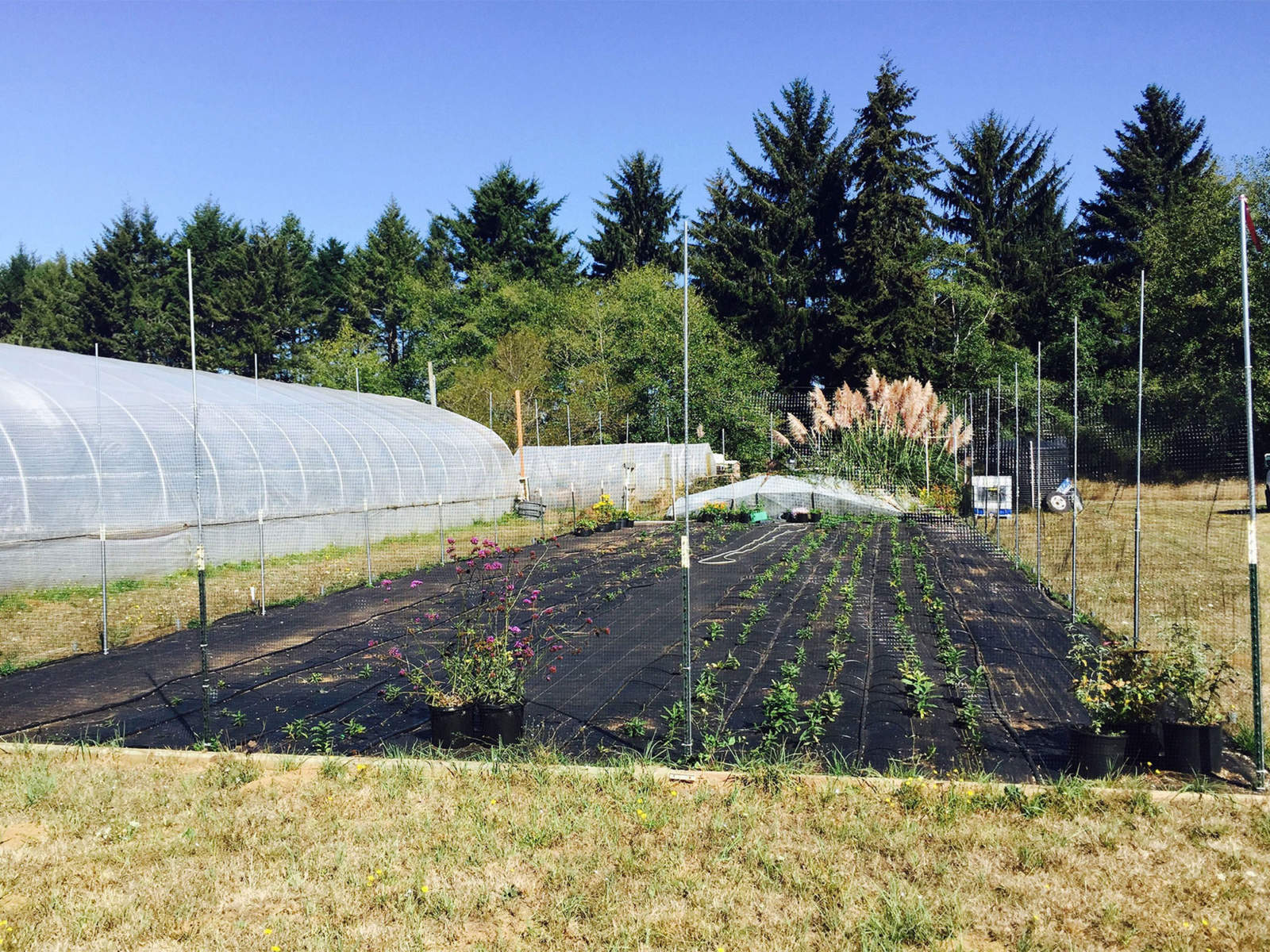With the goal of establishing a monarch butterfly sanctuary, our research greenhouse manager, Jeff, started the process of planting milkweed and surrounding support flowers in 2015. We discovered that our organic research greenhouses nestled in the picturesque hills of Humboldt County, would make an excellent butterfly habitat. Milkweed cultivation and propagation of nectar plants from which butterflies, hummingbirds, and bees feed is relatively easy and rewarding. Milkweed species are the primary food source for the larval stage of the monarch butterflies’ life cycle. The monarch caterpillar will feast on milkweed leaves, as it sheds its skin several times. When the caterpillar is ready, it will crawl away from the milkweed plant and seek a safe place to pupate. Finally, the skin is shed for a last time before it passes from the larval caterpillar stage, to the pupa chrysalis stage of metamorphosis. About two weeks pass, and a beautiful butterfly is born.
Milkweed is generally simple to grow from seed; however, the different subspecies are adapted to different climates. Determining which species grow optimally and thrive best in your area can be determined best by selecting species native to your growing region. Experimentation by trial-and-error with various subspecies will also provide insight into your ideal micro-climate compatibility. Many types of milkweed plants are perennial and need at least one season to establish a mature underground root structure known as the rhizome. Once the rhizome is well established, the plants will return with vigor each spring. Growing annual and perennial flowering ‘nectar’ plants, is an excellent way of attracting flying pollinator insects and hummingbirds to your yard and gardens. Monarch butterflies rely on a wide range of flowering plant nectar for food throughout their adult life. The monarch butterfly flies from flower to flower, serving as an excellent pollinator. The combination of milkweed and nectar plants can ensure that the monarchs have what they need to perpetuate their life cycles and continue on as a species, gracing our lives with beauty and intrigue.




